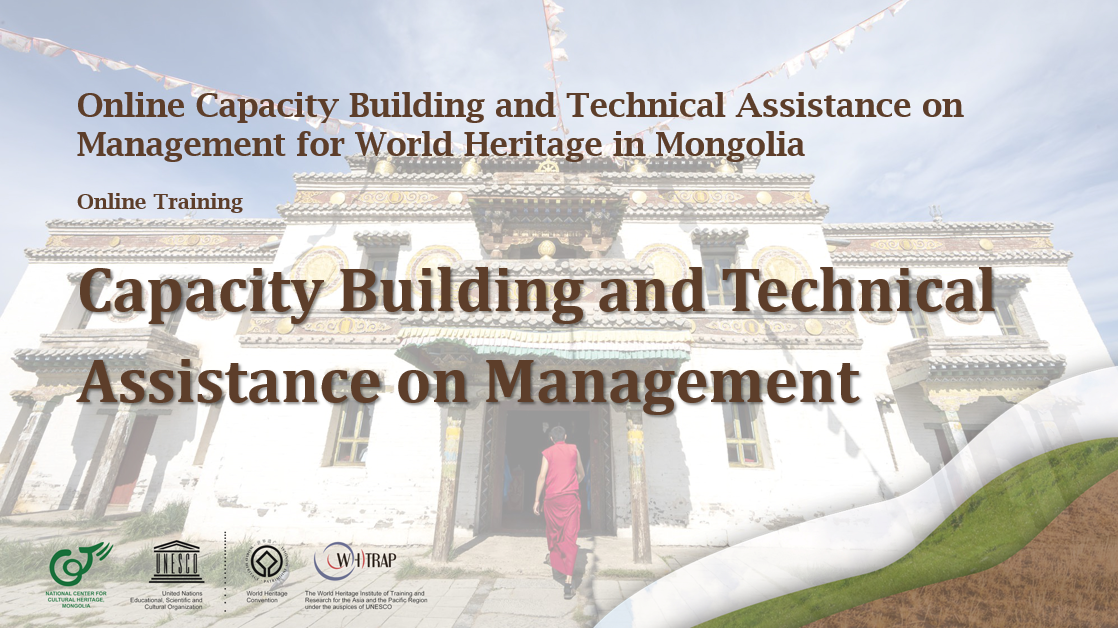
The main purpose of the event is to promote the implementation of capacity building activities in the conservation of cultural heritage in Mongolia, and assist the Mongolian to better understand the World Heritage Convention, key concepts, and statutory processes, to equip the participants with skills and knowledge in design and implementation of management plans/ systems.

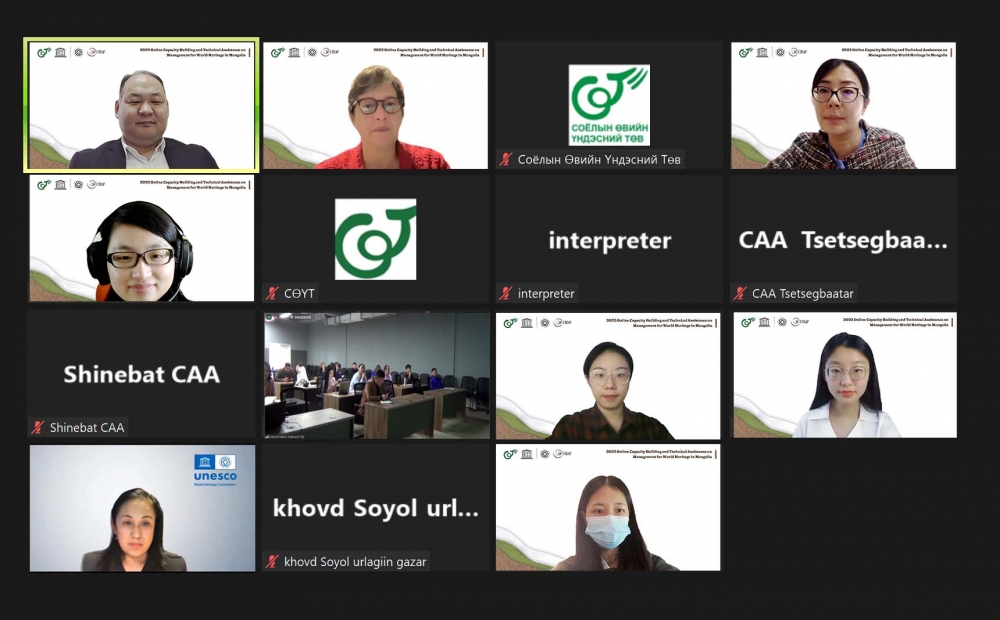
Group photos
An opening ceremony is held on 18 October. Mr. Davaatseren, head of the Cultural Heritage Policy and Implementation Department, Ministry of Culture, Ms. Himalchuli GURUNG, Chief of Unit, Asia and the Pacific Unit, World Heritage Center, and Ms. LU Wei, Executive Deputy Director of WHITRAP Shanghai, deliver the opening address. 31 officials from NCCH, three Administration Office of World Cultural Heritage sites in Mongolia, Rescue and Risk Management Research department, Registration and Information department, etc. participate in the event on the scene. Carolina Castellanos, Shao Yong, LI Hong represent WHITRAP Shanghai to make online presentations and discussion during the activity.
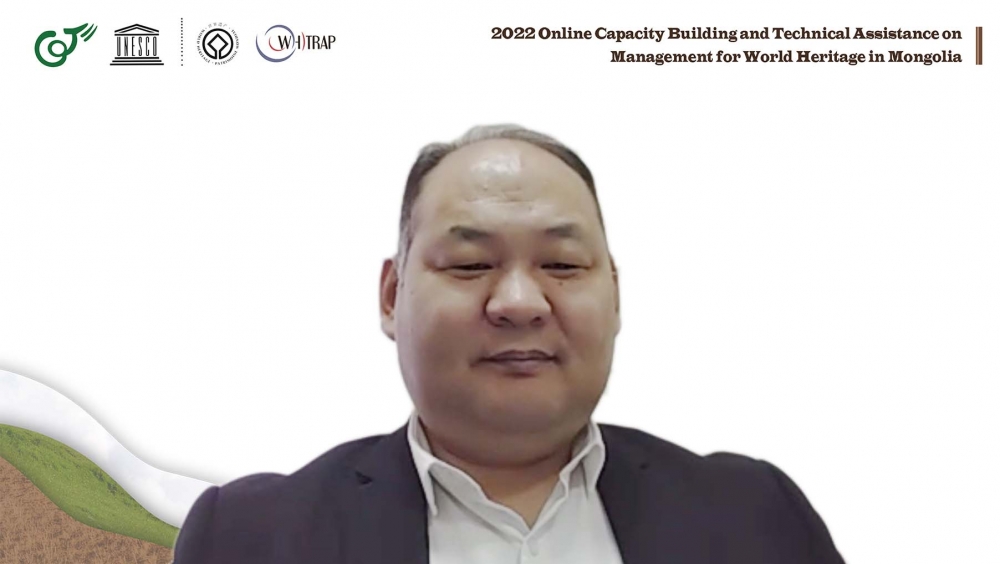
Mr. Davaatseren’s opening speech

Ms. Himalchuli GURUNG’s opening speech
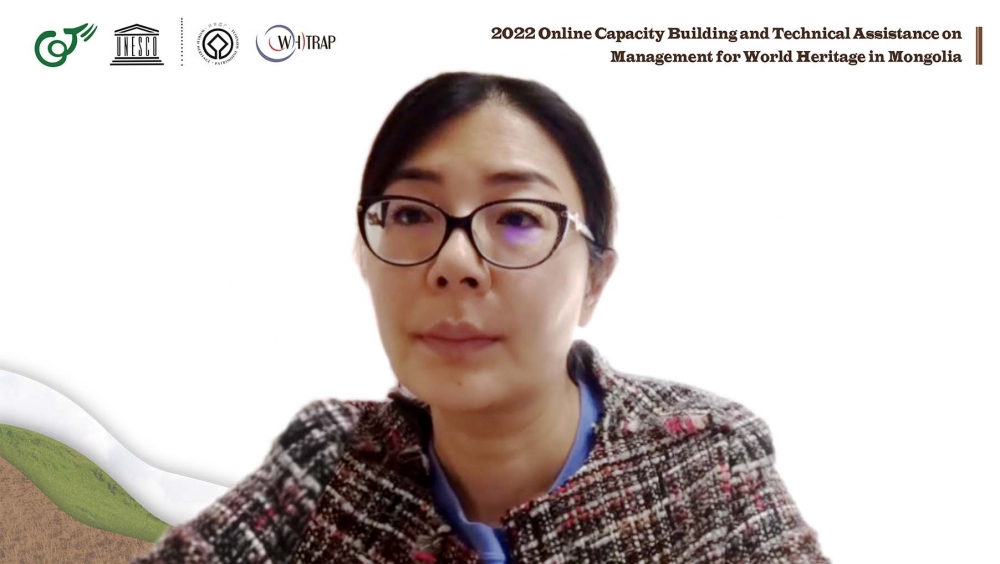
Ms. Lu Wei’s opening speech
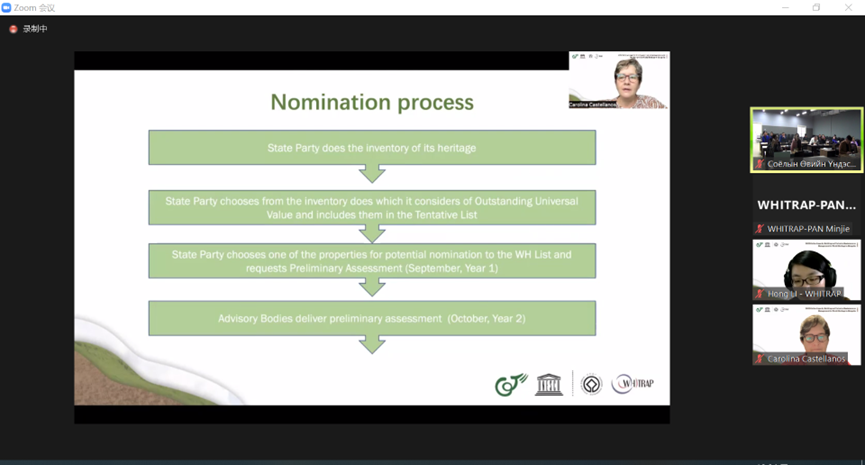
Ms. Carolina Castellanos presenting
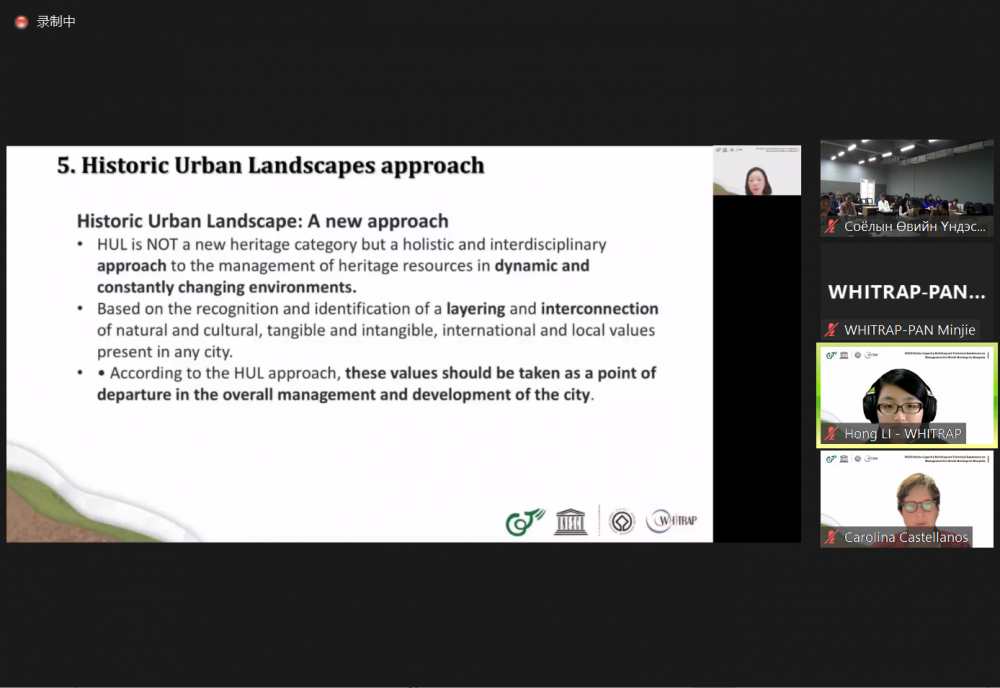
Ms. Shao Yong presenting
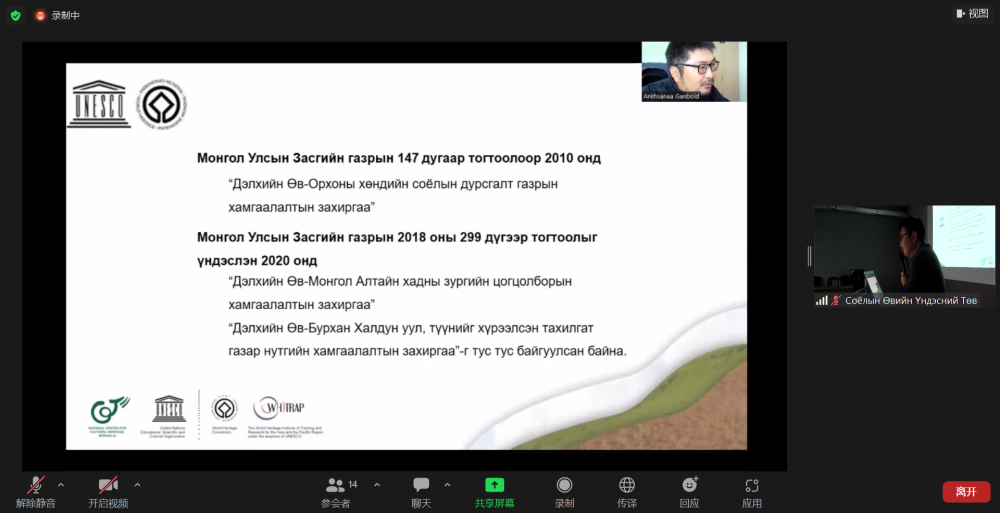
Representative from NCCH presenting
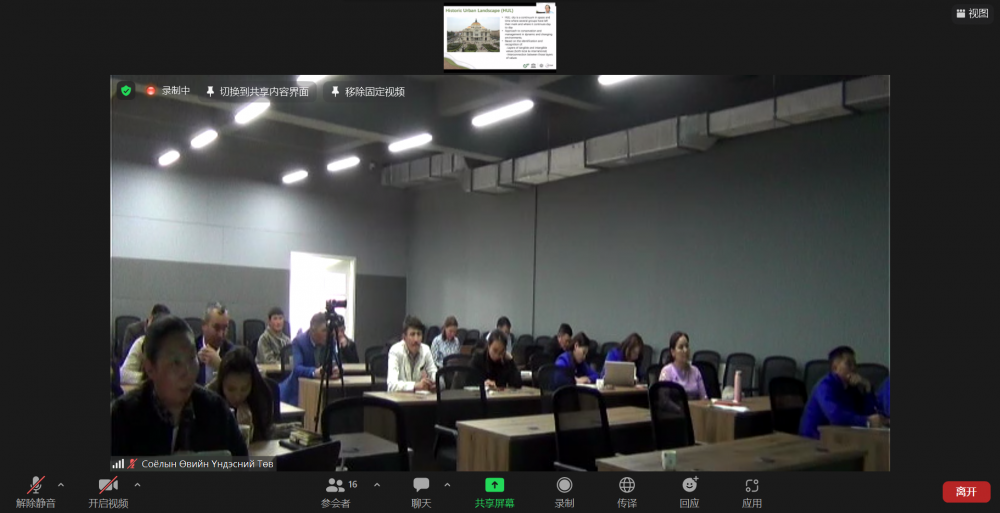
Offline participants listening to the lectures
The activity is designed with a hybrid model that includes pre-recorded video lectures, and on-line as well as off-line workshops to discuss questions and issues related to conservation and management of World Heritage properties in Mongolia. And technical assistance is provided to the State of Conservation on the case of the Great Burkhan Khaldun Mountain and its surrounding sacred landscape. The module mainly consists of two sections – The World Heritage Convention and the international context, and Managing World Cultural Heritage in Mongolia. The lectures cover from the understanding of World Heritage to the implementation of capacity building activities, including 10 units – 1) The World Heritage Convention, key concepts, and statutory processes, 2) World Heritage policies, 3) World Heritage management systems: approaches and design process, 4) Framework of management and conservation in Mongolia, 5) Defining Outstanding Universal Value: attributes, values, and criteria, integrity, and authenticity, 6) Identifying factors affecting World Heritage properties, 7) Working in multistakeholder contexts: governance, 8) Working in multistakeholder contexts: managing participation, 9) Documenting a heritage management system, 10) The management cycle: from design to implementation to monitoring and review/ adaptation.
